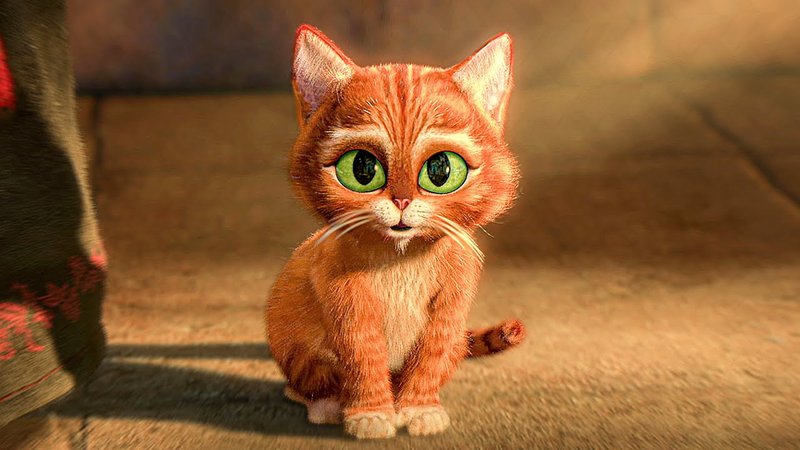
Let’s talk about the fascinating Puss Moth Caterpillar. At first glance, this little creature might look like something straight out of a science fiction movie, and it definitely isn’t your typical caterpillar! With its unique appearance and intriguing behaviors, the Puss Moth Caterpillar is a subject of wonder and curiosity.
You may be wondering what makes these caterpillars so special. Well, they’re not just about looks. The Puss Moth Caterpillar has some remarkable features and fascinating habits that make it a standout in the insect world. Think of it as nature’s little enigma, packed with surprises and a few hidden dangers. So, let’s dive into the world of this captivating caterpillar!
What is the Puss Moth Caterpillar?
The Puss Moth Caterpillar is the larval stage of the Puss Moth, scientifically known as Cerura vinula. This caterpillar earns its name from its resemblance to a fluffy, furry cat, complete with vibrant colors and striking patterns. But don’t let its cute appearance fool you! The Puss Moth Caterpillar carries some serious warnings in its arsenal.
Native to various parts of the world, including Europe and North America, these caterpillars thrive in diverse environments. They can often be spotted munching on leaves or resting on branches, camouflaged against predators. Their unique look, which includes long, hair-like spines and a striking coloration that can range from bright green to yellowish shades, makes them truly a remarkable sight.
Beyond aesthetics, the Puss Moth Caterpillar also plays a key role in the ecosystem. As herbivores, they contribute to plant health and food webs. They feast on various plants, particularly those in the willow family, making their diet quite specialized. You could say they have a refined palate when it comes to their food choices!
Physical Characteristics
One of the first things you’ll notice about the Puss Moth Caterpillar is its unusual, fuzzy appearance. These caterpillars can grow to be quite large, typically measuring around 2.5 to 3 inches in length. The fluffy hairs that cover their bodies serve a purpose beyond just making them look adorable; they can actually deter predators. The hairs can irritate the skin of potential attackers, sending a clear message: “Stay away!”
The vibrant colors of the Puss Moth Caterpillar are also striking. They often display bright greens, yellows, and even hints of blue. This colorful display isn’t just for show; it helps them blend into their environment, making it harder for predators to spot them. Nature has a way of equipping its creatures with the tools they need to survive, and the Puss Moth Caterpillar is no exception.
Another interesting fact is that while the caterpillar itself is harmless to humans, it goes through a remarkable transformation. When it’s time to pupate, the Puss Moth Caterpillar will find a safe spot, often in a cozy nook of a tree or shrub, and form a pupa, eventually emerging as a beautiful moth. This life cycle is a testament to the wonders of nature, showcasing the journey from caterpillar to moth.
Habitat and Distribution
The Puss Moth Caterpillar is adaptable. You can find it in a variety of habitats, from woodlands to gardens. They tend to prefer areas where their favorite plants grow, particularly willow, aspen, and poplar trees. This makes them quite the little leaf connoisseurs, feeding on the leaves of these trees to support their growth.
In terms of distribution, the Puss Moth can be found across Europe, extending into parts of North America and Asia. They thrive in temperate regions, which provide the right conditions for their development. Their presence in gardens and parks helps illustrate the interconnectedness of local ecosystems, and they serve as an indicator of a healthy environment.
If you’re hoping to spot one of these unique caterpillars, consider visiting areas near willow trees during spring. This is when they are most active and visible, munching away on leaves. However, keep in mind that they can be shy, so patience is key when you’re out looking for them!
Diet and Feeding Habits
The diet of the Puss Moth Caterpillar is rather selective. These little creatures primarily feed on the leaves of certain trees, favoring willows, aspens, and poplars. This specialized diet means they are often found in areas where these trees grow abundantly. It’s almost like they have a favorite restaurant, and they stick to it!
When feeding, the Puss Moth Caterpillar can be a bit of a glutton, often consuming large portions of leaves. They nibble away, leaving distinctive holes and patterns in the foliage. You might say they help shape their environment, even if it means giving the trees a bit of a haircut. Their munching is not just about filling their bellies; it’s a crucial part of their growth process.
Interestingly, as they grow, Puss Moth Caterpillars may also exhibit differences in feeding patterns based on their stage of development. Younger caterpillars tend to consume smaller, tender leaves, while older ones can tackle tougher foliage. This behavioral shift reflects their growing size and increasing need for energy. So next time you see one, know that there’s a lot more going on than meets the eye!
Life Cycle of the Puss Moth Caterpillar
The life cycle of the Puss Moth Caterpillar is a great example of nature’s wonders. It starts when adult moths lay their eggs, usually on the underside of leaves. Once the eggs hatch, tiny caterpillars emerge and begin their journey through life. This initial stage is crucial; they must quickly find food to grow and thrive.
As they eat and grow, the caterpillars go through several molts, shedding their skin multiple times. Each stage of growth is known as an instar, and with each molt, they become larger and more vibrant. This growth phase can take anywhere from a few weeks to several months, depending on environmental conditions.
Once they reach maturity, it’s time for a transformation. The caterpillar will find a sheltered spot to pupate, often hidden within the foliage. During this pupal stage, which can last several weeks, the caterpillar undergoes a remarkable transformation into a moth. Finally, the adult Puss Moth emerges, ready to start the cycle anew. It’s a beautiful reminder of nature’s perseverance and creativity!
Potential Threats and Predation
Despite their impressive defenses, Puss Moth Caterpillars are not immune to threats. Like many caterpillars, they fall prey to various birds, insect predators, and other wildlife. Their fuzzy appearance may act as a deterrent, but it doesn’t guarantee safety. When threatened, these caterpillars can also display behavioral adaptations to avoid predation. For example, they may curl up and pretend to be a small twig or leaf, making them less visible.
Another fascinating aspect of their survival strategy is their toxic properties. The Puss Moth Caterpillar is mildly toxic due to the chemical compounds it absorbs from the plants it eats. This means that predators who do take a bite could end up with a nasty surprise, which can help deter future attacks. It’s nature’s way of balancing the food chain while giving these caterpillars a fighting chance.
However, habitat loss and environmental changes pose a greater threat to their populations. Deforestation and urbanization can reduce their food sources and safe breeding grounds, making it crucial to protect their habitats. Conservation efforts can play a significant role in ensuring these unique caterpillars continue to thrive in the wild.
Interesting Facts About Puss Moth Caterpillars
Now that we’ve covered the essentials, let’s dive into some fun and interesting facts about the Puss Moth Caterpillar that you might not know:
- Colorful Warning: The bright colors and fluffy appearance of the Puss Moth Caterpillar serve as a warning to predators, signaling that it may be unpalatable or toxic.
- Camouflage Experts: Their ability to blend into their surroundings allows them to evade predators effectively, showcasing nature’s design genius.
- Transformative Marvel: The metamorphosis from caterpillar to moth is one of nature’s most fascinating transformations, illustrating the beauty of change.
- Unique Names: In some regions, the Puss Moth Caterpillar is also known as the “Giant Leopard Moth,” highlighting its striking appearance.
Conservation Status
The conservation status of the Puss Moth Caterpillar isn’t commonly highlighted, but like many species, they can be affected by changing environments. Habitat destruction due to urban development and deforestation can have a serious impact on their populations. Because they rely on specific host plants for food, the decline of these plants can lead to fewer caterpillars.
Efforts to maintain natural habitats and promote biodiversity are crucial not only for the Puss Moth Caterpillar but for many other species that share their environment. Engaging in conservation programs, supporting local ecosystems, and educating communities about the importance of these creatures are ways we can help secure a future for them. It’s all about creating a balanced ecosystem where each species has a role to play.
Additionally, observing these caterpillars in their natural habitat can also help raise awareness. Citizen science initiatives encourage people to report sightings and contribute to research, increasing our understanding of their life cycle and behaviors. Every little bit helps to ensure that the Puss Moth Caterpillar continues to enchant future generations!
FAQ
Are Puss Moth Caterpillars harmful to humans?
Puss Moth Caterpillars are generally not harmful to humans. While they have some toxins that can irritate skin, they are not aggressive and do not pose a serious threat. However, it’s a good idea to avoid handling them, especially if you have sensitive skin.
How long does the Puss Moth Caterpillar live?
The Puss Moth Caterpillar typically lives for a few months, depending on environmental conditions. After reaching maturity, they will pupate and eventually emerge as adult moths. The entire life cycle can take anywhere from several weeks to several months.
What do Puss Moth Caterpillars eat?
Puss Moth Caterpillars primarily feed on the leaves of willows, aspens, and poplars. They are quite selective eaters, and their diet is crucial for their growth and development.
Where can I find Puss Moth Caterpillars?
You can find Puss Moth Caterpillars in gardens, woodlands, and areas where their host plants grow. Look for them during the warmer months, particularly in spring when they are most active.
How can I protect Puss Moth Caterpillars?
Protecting Puss Moth Caterpillars involves promoting biodiversity and preserving their natural habitats. Planting native trees and shrubs, reducing pesticide use, and supporting local conservation efforts can make a difference.
What does the adult Puss Moth look like?
The adult Puss Moth is equally striking, with large, fluffy wings that often feature black and white patterns. They can be a bit larger than other common moths, showcasing the impressive transformation from caterpillar to moth.
Can Puss Moth Caterpillars change color?
While Puss Moth Caterpillars themselves don’t change color dramatically, their appearance can vary based on the plants they feed on. Different host plants can influence their coloration, which aids in camouflage.

